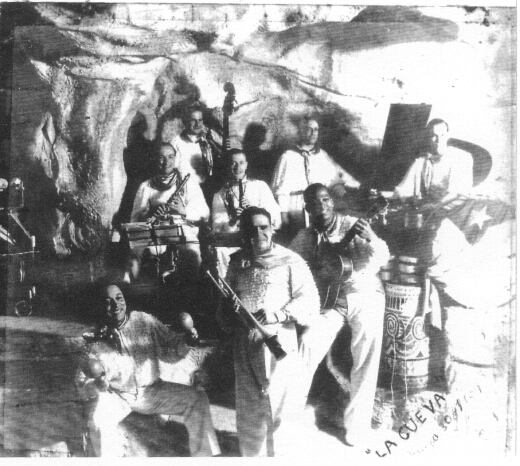9.17.2 Julio Cueva

Julio Cueva, a prominent Cuban trumpeter, composer, and orchestra conductor, was born on April 12, 1897, in Trinidad. He began playing the cornet and later took music theory and solfeggio classes. In 1915, he joined the Municipal Band of the City of Santa Clara.
He later delved into the world of musical composition with pieces whose rhythms were contagious. His most popular are El Golpe de Bibijagua and Tingo Talango. Around this time, he also joined the Philharmonic, directed by the Spaniard Sanjuán. In 1923, he was one of the founders of the Trinidad municipal band, of which he served as its director. In 1929, he moved to Havana.
Julio Cueva joined Don Aspiazu’s orchestra in 1930. With this group, he made his first international tour, performing in various venues in New York City. He later traveled to various cities and countries, including London, Lisbon, Zurich, Madrid, Tripoli, Beirut, and Paris. In Paris, the group participated in the filming of the movie Orquídea Negra, at the beginning of which Julio played El Manisero on his trumpet.
From there, Julio joined the jazz band Snow Fisher and his Harlomarvels, settling in Europe for a period of ten years, working as a trumpet player and bandleader. He later performed in Switzerland and Spain.
Along with Eliseo Grenet, he performed his music at a French cabaret called La Cueva. He performed in North Africa and then traveled to Madrid.
At the outbreak of the war in Spain in 1936, Julio Cueva joined groups in the western sector of the city collecting materials for the front. He later joined the Tenth Brigade and then the Fourth Division. He was awarded the rank of captain and appointed director of the band, which he commanded for the three years of the war.
He returned to his homeland in May 1939 and founded the Montecarlo Orchestra. This group performed on the radio and began to enjoy notable success on the RHC Cadena Azul station. With the Palau brothers’ orchestra, Julio performed at the Sans Souci cabaret. There, he shared roles with prominent musicians, including Remberto Lara, Tito Gómez, and Orlando Guerra (Cascarita).
Julio Cueva again joined the Hermanos Palau Orchestra, where he met pianist and arranger René Hernández. He founded his own orchestra in 1942, with which he began performing on the radio station Mil Diez and achieved notable success. The following year, he began working at the CMQ radio station. The orchestra was ranked the best in Cuba by the ACRI in 1944.
Following the triumph of the Revolution in 1959, this great Cuban musician was appointed archivist of a section of the Cuban Institute of Musical Rights. Julio Cueva died on December 30, 1975.








